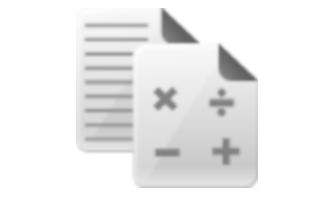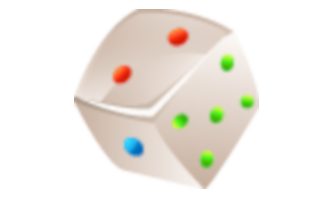Energy resources
Science, Grade 5
Energy resources
Study Guide

Energy resources
Flash Cards

Energy resources
Quiz

Energy resources
Worksheets

Energy resources
Games

Study Guide Energy resources Science, Grade 5
❮
1
/
4
❯
ENERGY RESOURCES A resource is a supply of something that will meet someone’s need. When we talk about energy resources, we are discussing those materials and events that can produce energy and thus become a resource to humans. Two kinds of energy resources: renewable and nonrenewable. A renewable resource is a resource that can be naturally restored or at least replenished as it is needed. So a renewable resource must be produced in a relatively short time, such as solar energy, which can become available as a resource whenever the sunlight shines on the earth. A nonrenewable resource is a resource that can’t be replaced or restored as it is needed. These types of resources take much longer to replace than most societies can wait. For example, coal takes longer than your lifetime to be created, so if your society relied on coal to produce heat energy and it ran out of coal, new coal could not be produced in time to provide any energy for you. Lesson Checkpoint: What is the difference between renewable and nonrenewable resources? Let’s look at some nonrenewable resources: Fossil Fuels Fossil fuels are energy sources that are made from plants and animals that died a LONG time ago and were buried under layers of the earth. The heat and pressure caused from being buried under layers and layers of earth changed the dead material into oil, natural gas, and coal. Crude Oil Type of resource: nonrenewable resource Where it is found: beneath the Earth’s surface and below the ocean floor What it is used for: gasoline, diesel fuel, and other fuels What it is used to make: plastic, asphalt, grease, wax © Copyright NewPath Learning. All Rights Reserved. Permission is granted for the purchaser to print copies for non-commercial educational purposes only. Visit us at www.NewPathLearning.com.
Natural Gas Type of resource: nonrenewable resource Where it is found: in the ground What it is used for: cooking, for heat, and in power plants to make electricity Interesting fact: Natural gas is flammable, but has no odor, so it’s mixed with a chemical that makes it smell like rotten eggs so people can tell if there’s a natural gas leak! Coal Type of resource: nonrenewable resource Where it is found: beneath the surface of the earth, at different depths What it is used for: Power plants burn the coal to create electricity Lesson Checkpoint: What is crude oil used for? Advantages and disadvantages of fossil fuels Let’s look at the advantages first: • Fossil fuels are easy to store and are easy to move to different places that need them. • We are able to get large amounts of energy from fossil fuels (which means they can create a lot of electricity). • Fossil fuel power plants are very reliable. • Fossil-fuel plants can be built almost anywhere. Now for the disadvantages… • Two words: AIR POLLUTION, caused when we burn these fuels. This is the biggest disadvantage of fossil fuels. • Another crucial disadvantage is the fact that they are not renewable! So with these disadvantages in mind, we need to find alternative choices! © Copyright NewPath Learning. All Rights Reserved. Permission is granted for the purchaser to print copies for non-commercial educational purposes only. Visit us at www.NewPathLearning.com.
What are some alternative energy resources? The power of WIND We can use WIND to create electricity! A windmill is moved by the wind which then turns a turbine. The turbine runs a generator that makes electricity. The more wind, the more electricity is created. Advantage: no air pollution Disadvantage: wind does not blow all the time (no wind = no electricity) The power of WATER Hydroelectric power plants use flowing water to create electricity. Rushing water spins blades that run generator that create electricity. Advantages: no air pollution and its renewable Disadvantage: hydroelectric plants can only be built where there is a large amount of rushing water The power of the SUN Solar energy is energy we get from the Sun. Solar cells are devices made to convert sunlight into electricity. Advantages: no air pollution and its renewable Disadvantages: sun does not shine all the time (no sun = no electricity), it is expensive, and A LOT of solar panels are needed to create electricity © Copyright NewPath Learning. All Rights Reserved. Permission is granted for the purchaser to print copies for non-commercial educational purposes only. Visit us at www.NewPathLearning.com.
The power of the EARTH Geothermal energy is heat from the earth. (geo = earth and thermal = heat) A geothermal type heating system has pipes buried beneath the ground and uses the earth’s heat to buildings. Advantage: no pollution Disadvantage: Geothermal power plants can only create electricity from hydrothermal energy found only around areas where volcanoes and earthquakes occur. The Energy of TRASH? Biomass includes material or materials from organisms that was once alive – plants and trees, animal waste, and food waste. Garbage is burned to create electricity. Advantages: helps eliminates garbage (less in landfills) and it’s renewable Disadvantage: causes air pollution when burned Lesson Checkpoint: What is one energy resource that does NOT create pollution? © Copyright NewPath Learning. All Rights Reserved. Permission is granted for the purchaser to print copies for non-commercial educational purposes only. Visit us at www.NewPathLearning.com.
